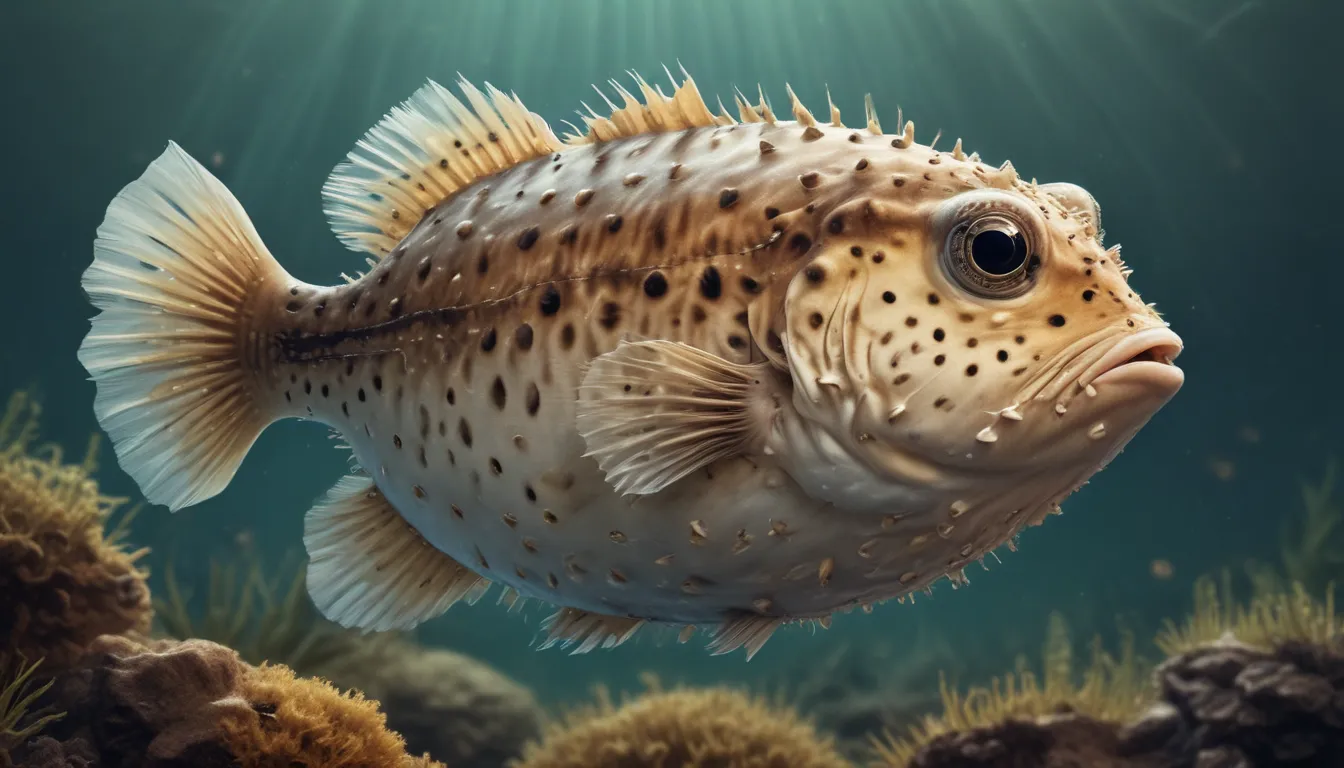The pictures we use in our articles might not show exactly what the words say. We choose these pictures to make you interested in reading more. The pictures work together with the words but don’t take their place. The words still tell you the important facts.
Are you ready to delve into the enchanting world of puffer fish? These quirky ocean dwellers are not just fascinating for their ability to puff up when threatened but also for their unique characteristics and behaviors. From their toxic defense mechanisms to their intelligence, puffer fish continue to captivate both marine enthusiasts and curious minds. Let's embark on an exciting journey to uncover the secrets of these spiky yet captivating creatures.
Unveiling the Enigmatic World of Puffer Fish
Puffer fish, belonging to the family Tetraodontidae, are a diverse group of around 120 species known for their remarkable ability to inflate themselves when threatened. This unique defense mechanism involves ingesting water or air, causing them to puff up and appear larger to potential predators. The scientific name for puffer fish, Tetraodontidae, stems from the Greek words “tetra,” meaning four, and “odous,” meaning tooth, alluding to the four large teeth at the front of their mouths.
In addition to their inflation tactic, puffer fish possess toxins in their skin and organs, making them unpalatable and potentially lethal to predators. Some species also boast venomous spines for added protection. Despite their small size, puffer fish have strong jaws that allow them to crush the shells of their prey, which primarily consists of crustaceans and mollusks. Their excellent camouflage abilities, coupled with the ability to change the color and pattern of their skin, help them blend seamlessly with their surroundings to evade predators.
Delving Deeper into the World of Puffer Fish
Puffer fish have a unique swimming style characterized by slow and graceful movements, attributed to their rounded bodies. Their eyes positioned on the sides of their heads grant them a wide field of vision, enabling them to spot potential threats or prey from various angles. These intelligent creatures have been observed displaying complex behaviors and problem-solving skills, underscoring their status as one of the more intelligent fish species.
Some puffer fish species are highly venomous, equipped with toxic spines for defense. While these toxins pose a danger to predators, they also make puffer fish a prized delicacy in certain cultures. In Japan, puffer fish, known as fugu, is considered a delicacy but must be prepared with great skill to remove the toxic parts. Male puffer fish showcase their creativity and artistry in mating rituals by crafting intricate patterns in the sand to attract potential mates.
Appreciating the Diversity of Puffer Fish
The largest species of puffer fish, the ocean sunfish or Mola mola, can grow up to three feet long and weigh over 2,000 pounds. Found in tropical and subtropical marine environments, puffer fish also inhabit freshwater rivers and lakes in some regions. Their adaptability and resilience allow them to thrive in various habitats, showcasing their versatility as marine creatures.
While puffer fish possess a captivating charm, it is essential to appreciate them from a safe distance due to their toxic nature. Remember, some species contain a highly toxic substance called tetrodotoxin, which can be lethal if ingested in large quantities. By respecting these unique creatures and their habitat, we can ensure their well-being and perpetuate their enchanting presence in the ocean.
Exploring the Fascinating World of Puffer Fish Together
As we conclude our exploration of the wondrous world of puffer fish, let's reflect on the marvels of these intriguing creatures. With their ability to inflate, their toxic defense mechanisms, and their remarkable intelligence, puffer fish continue to enthrall us with their unique features and behaviors. Whether admired in the wild or cherished as pets under expert care, puffer fish enrich our understanding of marine life and inspire us to appreciate the diverse wonders of the ocean.
FAQs About Puffer Fish
-
Are puffer fish dangerous to humans?
Puffer fish can be dangerous if consumed or mishandled, as some species contain tetrodotoxin, a highly toxic substance. -
Can puffer fish inflate themselves whenever they want?
Yes, puffer fish can inflate themselves by ingesting water or air as a defense mechanism. -
How long can puffer fish stay inflated?
Puffer fish can remain inflated for varying durations, depending on the species and extent of inflation. -
Do puffer fish have natural predators?
While puffer fish have few natural predators, some species, such as sharks and large fish, can consume them without harm. -
Can puffer fish change their color?
Yes, puffer fish have the ability to change their color for communication, camouflage, or territorial display. -
Can puffer fish live in freshwater?
Some species of puffer fish can tolerate freshwater environments, although they are primarily found in marine or brackish waters. -
Can you keep a puffer fish as a pet?
Puffer fish can be kept as pets with specialized care and attention to their dietary and environmental needs.
With these facts and insights in hand, we can deepen our appreciation for the captivating world of puffer fish and the diverse wonders they bring to the ocean ecosystem. Let's continue to explore, learn, and celebrate the enchanting marvels of marine life together.






